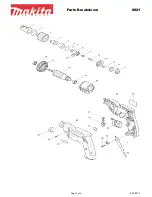
Green
●
Space is efficiently used. The UPS saves space for placing more IT equipment
and reduces the footprint by 50% compared with traditional solutions of
combining cabinets.
●
The power density of power modules can reach 100 kW/3 U, which is the
highest in the industry.
●
High efficiency is ensured even with a low load rate. If the load rate is
extremely low, the intelligent rotation hibernation technology ensures
redundancy and improves the UPS efficiency.
Intelligent
The iPower fault warning function is supported. If a battery, capacitor, fan, or any
other key component fails, a warning is generated to prevent the fault from
escalating.
Safe
●
UPS power and control modules use redundant design. No single-point fault
occurs.
●
The UPS supports a wide input voltage range of 138–485 V AC (line voltage)
to adapt to poor power grids.
●
The UPS has an output power factor (PF) of 1.0, which is suitable for linear
and non-linear loads with a PF greater than 0.5. This allows the UPS to
connect to more loads and reduces customer investments.
●
The UPS passes reliability tests which focus on high temperature, high
humidity, and dust adaptation. The impact of environment on the UPS
reliability is reduced.
2.3 Application Scenarios
The UPS5000-H is suitable for power systems in various indoor scenarios,
including large-sized data centers or communications centers, equipment rooms of
large-sized enterprises, equipment rooms of financial systems, industrial
automated equipment, and scheduling centers.
Table 2-1 Typical UPS configurations
Configuration
Application Scenario
Description
Single UPS
Supplies power to common
loads.
-
Parallel system Supplies power to large-sized
data centers or important loads.
It features high reliability and
strong transient overload
resistance capability.
A maximum of four UPSs
can be connected in
parallel.
UPS5000-H-(400 kVA-800 kVA)
User Manual (100 kVA Power Module)
2 Product Overview
Issue 02 (2021-04-22)
Copyright © Huawei Technologies Co., Ltd.
17
















































